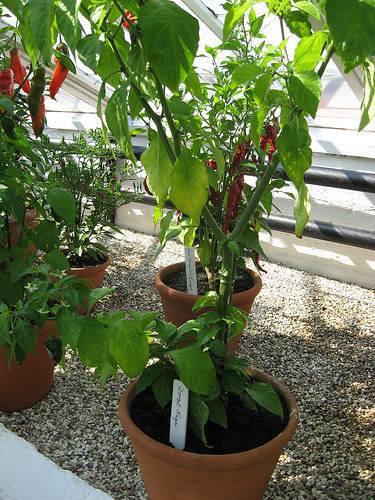With the global trend of food becoming spicier and spicier, also comes the cultivation of hotter and hotter chilies. Common household names like the Tabasco, jalapeno, and habanero may be ubiquitous but heat-wise, some new cultivars make even the habanero squirm.
From Wikipedia: "The "heat" of chili peppers is measured in Scoville units (SHU), which is the amount of times a chilli extract must be diluted in water in order for it to lose its heat. Bell peppers rank at 0 SHU, New Mexico green chilies at about 1,500 SHU, jalapeños at 3,000–6,000 SHU, and habaneros at 300,000 SHU."
Until recently, the hottest pepper recognized (by the Guiness Book or Records, no less) was the Naga Jolokia, coming in at over 1,000,000 SHU. This is incomprehensibly hot. To put this in perspective, pepper spray is 2,000,000 SHU.
Enter the Dorset Naga. Developed by a mail order chili pepper grow house in the UK called Peppers by Post, the preliminary findings from labs testing the heat of the Dorset Naga is astounding. Some have rated it as high as 1.6m SHU. That's more than 5 times hotter than the habanero and approaching levels which are used as non-lethal weapons.
In a great article about chilies in The Economist titled "Global Warming", they quote the owner of Peppers by Post Michael Michaud, “I sent the powder to a couple of labs. They didn’t believe the reading. They thought they had made a mistake.”
There are several videos online of people trying to eat the Dorset Naga. Check them out, some are hilarious.

